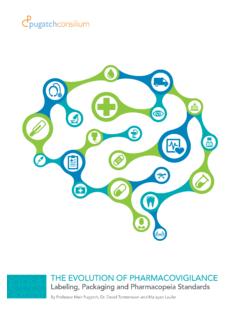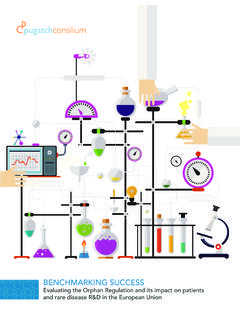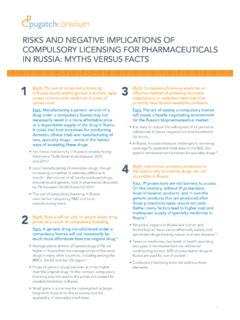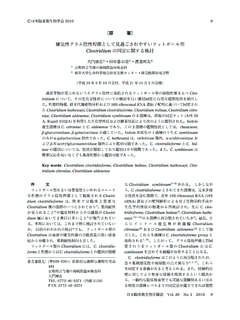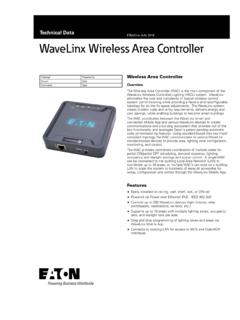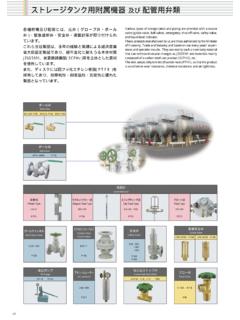Transcription of DEVELOPING A CULTURE OF …
1 DEVELOPING A CULTURE OF pharmacovigilance Towards International Best PracticesBy Professor Meir Pugatch, Dr David Torstensson and Ma ayan LauferSECTIOND eveloping a CULTURE of Pharmacovigilance2 This report was commissioned by Novartis Pharmaceuticals Corporation. The views represented here are those of the authors Pugatch Consilium 2014 The moral right of the authors has been rights reserved. Without limiting the rights under copyright reserved above, no part of this publication may be reproduced, stored or introduced into a retrieval system, or transmitted, in any form or by any means (electronic, mechanical, photocopying, recording or otherwise), without the prior written permission of both the copyright owner and the a CULTURE of Pharmacovigilance3 LIST OF ABBREVIATIONS 4 EXECUTIVE SUMMARY 7 INTRODUCTION 111 THE IMPORTANCE OF MONITORING THE SAFETY OF MEDICINES 14 The biopharmaceutical R&D process Essential pillars safety, quality and efficacy International standardization 172 CAPTURING THE ESSENCE OF pharmacovigilance 20 Background The clinical phase The post-marketing phase The post-exclusivity phase A Gold Standard for pharmacovigilance ?
2 283 THEORY VERSUS PRACTICE COUNTRY CASE STUDIES 31 Argentina 32 Brazil 35 China Indonesia Mexico Russia Turkey 494 CONCLUSIONS AND RECOMMENDATIONS 53 TABLES AND FIGURES Figure 1 The biopharmaceutical R&D process 15 Table 1 ICH Guidelines by main topic and classification codes 18 Table 2 A Gold Standard of pharmacovigilance 29 Table 3 Argentina: Strengths and weaknesses 34 Table 4 Brazil: Strengths and weaknesses 37 Table 5 China: Strengths and weaknesses 39 Table 6 Indonesia: Strengths and weaknesses 42 Table 7 Mexico: Strengths and weaknesses 45 Table 8 Russia: Strengths and weaknesses 48 Table 9 Turkey: Strengths and weaknesses 51 CONTENTSD eveloping a CULTURE of Pharmacovigilance4 ANDA Abbreviated New Drug Application ANVISA Brazilian National Health Surveillance Agency API Active Biopharmaceutical IngredientASEAN Association of Southeast Asian Nations CADREAC Collaboration Agreement of Drug Regulatory Authorities in European Union Associated Countries CDSC Central Drugs Standard Control (India)CGMP Current Good Manufacturing Practice CIOMS Council for International Organizations of Medical Sciences CLs Compulsory LicensesCMC Chemistry, Manufacturing and Controls COFEPRIS Commission for Protection against Health Risks (Mexico)
3 EMA European Medicines AgencyFDA US Food and Drug AdministrationFDI Foreign direct investmentGCP Good Clinical PracticesGLP Good Laboratory PracticesGMP Good Manufacturing PracticesICH International Conference on Harmonization of Technical Requirements for Registration of Biopharmaceuticals for Human Use IND Investigational New Drug MERCOSUR Southern Common MarketNDA New Drug Application OECD Organisation for Economic Co-operation and DevelopmentPAHO Pan American Health OrganizationPVP pharmacovigilance PlanLIST OF ABBREVIATIONS DEVELOPING a CULTURE of Pharmacovigilance5 RMP Risk Management PlanQbD Quality by Design RDP Regulatory Data ProtectionR&D Research and DevelopmentSFDA State Food and Drug Administration (China)T FAM Turkey s pharmacovigilance Centre WHO World Health OrganizationAdditional definitionsBiopharmaceutical A term used to describe and include both chemical based medicines (which are manufactured using a chemical process and products) as well as biologics which are medicines that are inherently biological products developed with biological sources and process.
4 LIST OF ABBREVIATIONS DEVELOPING a CULTURE of Pharmacovigilance6 DEVELOPING a CULTURE of Pharmacovigilance7 Today the legislation and regulation of the manufacture, dispensation and use of biopharmaceutical products is vast, complex and comprehensive. Governments across the world (including developed, DEVELOPING and emerging market countries) view the regulation of medicines and biopharmaceutical treatments as paramount to maintaining public health. Medicines and new medical treatments have to undergo a wide range of tests and safety procedures both before they are allowed to market and after they have been approved for sale and use. But standards of safety control and quality are not the same or even similar throughout the world. Not surprisingly the most rigorous systems of regulation can be found in those parts of the world with the most advanced health systems: North America, Europe, Japan, Australia, and Southeast Asia.
5 Other countries face challenges with regards to both having an adequate level of biopharmaceutical regulation in place as well as making sure it is being applied and implemented in report examines one of the most important facets of a high quality drug regulatory structure, namely that of pharmacovigilance . pharmacovigilance is the name given to the mechanisms and tests that together map and ensure the safety of a medicine throughout its life span from test tube to patient. As patients and healthcare professionals around the world access and use more biopharmaceutical products and technologies, the importance of maintaining and, in many cases, introducing and applying comprehensive pharmacovigilance regulations only increases. Biopharmaceutical products are today manufactured, sold, distributed and dispensed across the globe. Complex and interlinked supply and demand chains mean manufacturers, distributors, wholesalers, pharmacists, healthcare professionals and patients all make up a global network of producers, sellers and consumers of these products and technologies.
6 In this context introducing and applying high quality standards of pharmacovigilance is of real importance in securing the integrity of biopharmaceutical supply chains against the growing menace of substandard and counterfeit medicines and ensuring patient report makes two key , through an exhaustive examination of the highest standards and best pharmacovigilance practices throughout the clinical, post-marketing and post-exclusivity phases of a biopharmaceutical product s life span (from the early R&D stages all the way to the market entry of generic products) the report assembles a pharmacovigilance Gold Standard . Although not purporting to be a definitive guide or one-size-fits-all solution this Gold Standard does include a number of fundamental elements any robust pharmacovigilance system must adhere to including a recognition of the different challenges in safety monitoring in each phase and corresponding sub-phase of pharmacovigilance .
7 The Standard is summarized in the table on the next , this report examines the state of pharmacovigilance in seven emerging and DEVELOPING markets. Looking at the legal and regulatory situation as well as the actual application of pharmacovigilance regulations and rules the report finds that there is considerable variation as to the extent and effectiveness of drug regulations across the world. Many countries, such as China and Brazil, have in place relatively robust regulations but face challenges with applying and enforcing those regulations. Other countries, such as Indonesia, lack the right rules and regulations themselves. Equally, it is clear that awareness of pharmacovigilance among health professionals and patients is relatively limited in all the studied countries. The survey evidence that exists suggests that knowledge about pharmacovigilance and reporting mechanisms among health professionals in the seven countries analyzed is quite limited and can EXECUTIVE SUMMARYD eveloping a CULTURE of Pharmacovigilance8 EXECUTIVE SUMMARYA Gold Standard of pharmacovigilancePhase I.
8 The clinical phaseThe pre-clinical stage Ensure safety and quality within the drug s R&D process, by implementing the Chemistry, Manufacturing and Control regulatory requirements, such as process validation, Quality by Design and Good Laboratory Practices clinical stage Ensure adherence to ICH E6 Good Clinical Practices guidelines to ensure ethical and scientific quality and credibility when conducting clinical trials Enforce close monitoring, analysis and evaluation of AE/ADR reports within clinical/bioequivalence trialsThe marketing approval and manufacturing stage Adopt a risk-based strategy for all new drug applications, by requiring CMC information and current Good Manufacturing Practices certificates, and by including Risk Management and pharmacovigilance PlansPhase II: The post-marketing phaseEstablish a robust regulatory framework in order to Construct safety profiles for marketed drugs in collaboration with manufacturers Conduct phase IV clinical trials when necessary Ensure safety and quality in distribution and dispensation by enforcing market authorization holders adherence to ICH guidelinesEstablish good practice of pharmacovigilance by Raising awareness of healthcare professionals and consumers on the importance of properly reporting ADRs by using ICH guidelines Ensure that a robust national system for the accumulation and evaluation of ADRs is in place and is operative Ensure that manufacturers acknowledge and complies with pharmacovigilance practices and standards, such as the submission of Periodic Safety Update Reports, risk management and pharmacovigilance plans.
9 And upholding international standards of manufacturing Setting the roles and responsibilities of all actors involved, in accordance with the WHO and ICH guidelines Ensure the system s ability to collaborate with international initiativesPhase III: The post-exclusivity phase Establish robust legal and regulatory framework and enforce international standards in manufacturing and distribution Ensure accurate and up-to-date product labeling for all marketed drugs, in accordance with newly-acquired safety informationDeveloping a CULTURE of Pharmacovigilance9 EXECUTIVE SUMMARY vary dramatically from health institution to health institution and region to region. Surveys of patient knowledge and awareness of the importance of ADR reporting and how to report adverse events showed even lower levels of on these main findings this report makes the following four recommendations: 1. Recognize the centrality of pharmacovigilance to public health Increasingly, greater numbers and kinds of biopharmaceutical products and treatments are available to a growing number of patients across the world.
10 Now more than ever modern medicine is relying on biopharmaceuticals to treat, cure and help patients. Particularly in the emerging world in which biopharmaceutical markets and consumption is set to outpace growth in the developed world. It is vital in this context that increased demand and supply of medicine and medical technologies is matched by an equally developed and strong safety net. 2. Measure performanceGovernments and policymakers need to measure pharmacovigilance performance consistently and comprehensively with clear and transparent benchmarks and goals. Measures should be holistic including not only number of ADRs but repeated surveys and reviews of levels of pharmacovigilance awareness among health professionals, patients and other key Boost awareness levels In most countries the evidence suggests that awareness and recognition of pharmacovigilance is quite limited both among health professionals and patients.
